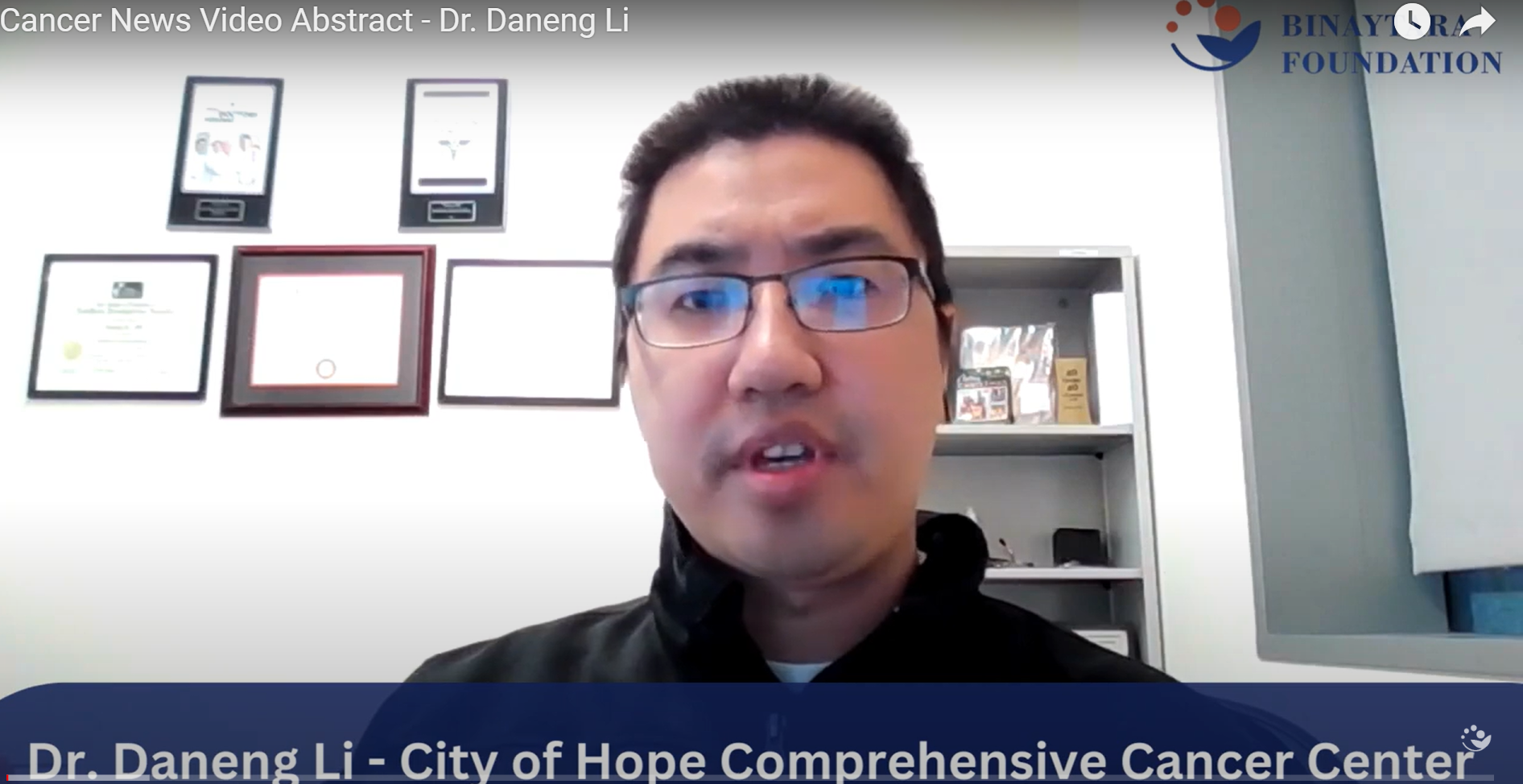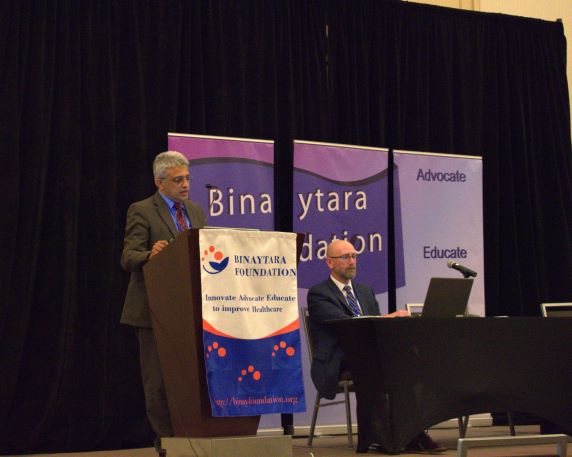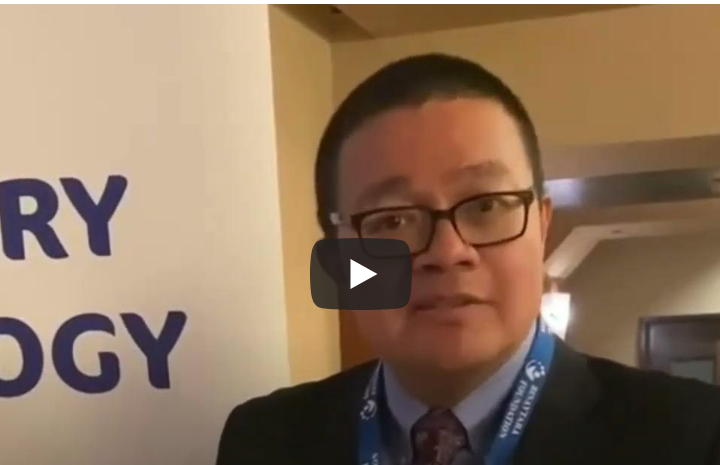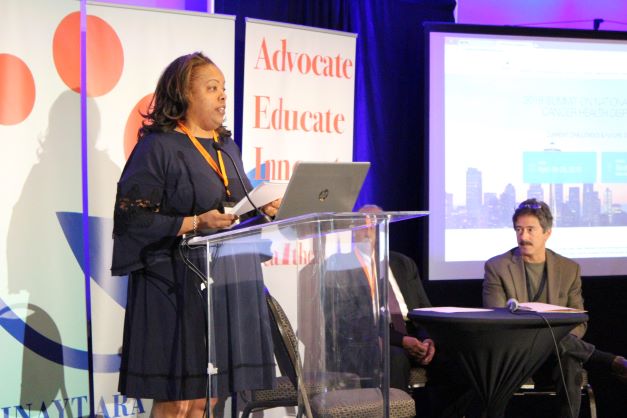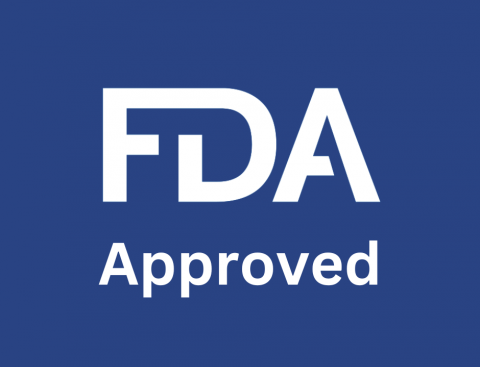Dr. Daneng Li of City of Hope Comprehensive Cancer Center shares a recent abstract from ASCO GI, NRG/RTOG 1112, a randomized phase III study of sorafenib versus stereotactic body radiation therapy followed by sorafenib in patients with hepatocellular carcinoma.
Transcription:
“At this year’s ASCO GI 2023, we had a very interesting study investigating the role of SBRT with systemic therapy for patients with locally advanced unresectable HCC. So, this study presented by Dr. Laura Dawson as well as colleagues which really told the story of NRG/RTOG 1112, which was a randomized phase 3 trial to investigate the role of sorafenib versus SBRT followed by sorafenib in patients with locally advanced unresectable HCC. So, this was a study that took eligible patients that were no longer amenable to loco-regional therapies for predominantly liver-confined HCC, meaning that they could not undergo surgical resection, they could not undergo ablation, and they could not undergo liver-directed therapies, such as chemo embolization. Additional eligibility criteria for this study were that they could not have a very large tumor defined as greater than 20 centimeters, in terms of the size of the tumor, and they could not have extrahepatic metastasis that were greater than three centimeters in size. All of these patients had excellent liver function, in terms of Child Pugh Class A, and ultimately, if they met eligibility, they were randomized in a one-to-one fashion to receive either sorafenib at full dosing versus by SBRT followed by sorafenib, initially at a reduced dose, which was then escalated to full dosing.
The primary endpoint of the study was overall survival, with secondary endpoints being progression-free survival as well as quality of life matrices. Unfortunately, at the time when the study was conducted, the standard of care was sorafenib, but as the study was designed and conducted, the evolution for treatment for patients with locally advanced HCC has changed, with a lot of incorporation in terms of newer immuno-oncology agents. So, because of this, the overall statistics of the study had to be modified to decrease the overall sample size for patients at accrual.
Ultimately, only 193 patients were accrued to this study, of which 177 eligible patients were ultimately randomized one-to-one to receive either sorafenib or SBRT followed by sorafenib. The study really consisted of what I would say an advanced patient population meaning that 63% of patients had some form of portal vein invasion, whether it was VP3 or VP4, so this was an aggressive disease patient population. The study did show that there was a benefit in terms of an improvement in overall survival, from 12.3 months with sorafenib to 15.8 months with SBRT followed by sorafenib. In addition, there was also an improvement in progression-free survival, from 5.5 months with sorafenib, up to 9.2 months with SBRT followed by sorafenib. Quality of life metrics was very limited on the study, basically because of the fact that many patients were not able to complete all the assessments. So, no formal statistical analysis was performed for this, and this was, I would say, really exploratory results. But here, in terms of the exploratory quality of life results, what was seen was that only 10% of patients noted an improvement in quality-of-life scores in the sorafenib arm, compared to 35% patients that reported improvement in terms of quality-of-life scores in the SBRT followed by sorafenib arm. So, maybe a suggestion that SBRT in this patient population may be able to help with quality of life but ultimately, we would need a larger sample size to be able to definitively know whether or not this is the case.
So, what is the overall context of this to our current landscape of locally advanced unresectable HCC? I would say that the results and its applicability to our current state in HCC is very limited, mainly because we no longer really use sorafenib. Certainly, if a patient has a contra-indication to any of the newer immunotherapy agents, then I think the study may be applicable. So, particularly maybe for patients that have undergone a prior liver transplant, when they can’t have immuno-oncology agents, or those that have significant autoimmune conditions, but outside of that, really, we are in a new era where most of our patients are receiving some form of IO combination treatments for locally advanced unresectable HCC, and that is really the new standard of care. Therefore, in order to better understand the role of SBRT in patients with locally advanced HCC, more studies with newer combinations need to be done, and there were some posters at GI ASCO that have hinted at initial pilot studies where this is being explored, whether or not SBRT is combined with atezolizumab plus bevacizumab or SBRT is combined with durvalumab plus tremelimumab .So, I think we need to look at those pilot studies to see whether or not there is a role for SBRT truly and locally advanced HCC, particularly those that might have vascular invasion, and until we get those results, we won’t really know what is the true role of SBRT going forward. So, ultimately, more studies are needed but I think this is a great start in terms of a proof of concept study about the role of SBRT, at least with a tyrosine kinase inhibitor, in terms of sorafenib, for those patients with locally advanced unresectable HCC.”

